Community Garden Findings
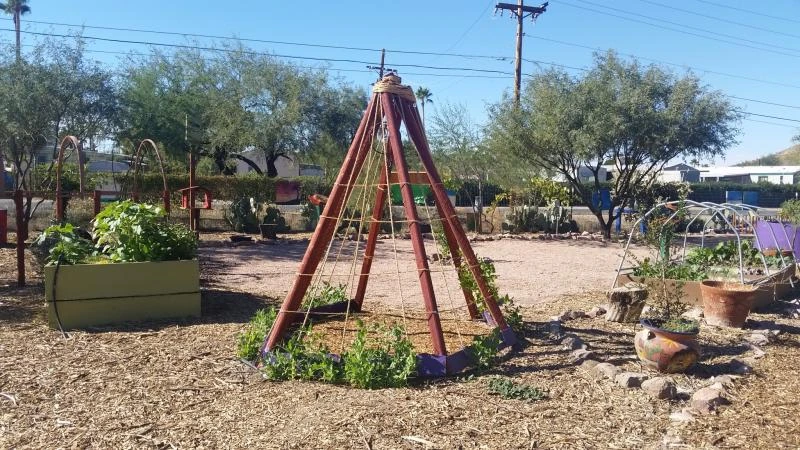
Las Milpitas Community Farm, Community Food Bank of Southern Arizona
Run by the Community Food Bank of Southern Arizona, Las Milpitas de Cottonwood is a six-acre community farm that serves as a gardening and educational cornerstone in Tucson. At no cost, Las Milpitas offers local residents the materials and support necessary for growing their own food, thereby making fresh produce more accessible to the wider community. To learn more about the community members participating in urban agriculture activities at Las Milpitas, the project administered a survey to gardeners planting at the community farm during the spring of 2017. Therefore, this research brief provides an overview of the results obtained through the survey.
Backyard Gardeners in Tucson Findings
As part of the ‘Greening the Food Deserts of Tucson, Arizona’ applied research project, an online survey was administered via the ‘Tucson Backyard Gardening’ Facebook group page, which collected 80 individual responses. What we found is the gardeners included in the survey were overwhelmingly Caucasian females, and more than half of backyard gardeners surveyed live in a household with an annual income of $60,000 per year or less.
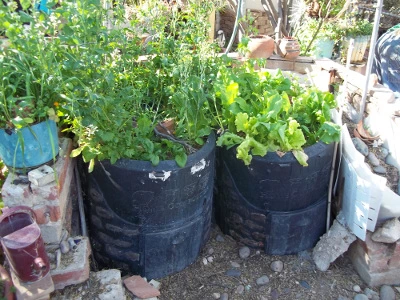
"I added two inches of previously composted soil to the top of the compost in progress and planted a garden of vegetables. When the crops are harvested the compost underneath will be the perfect soil" Photo credit: Joy L. Holdread, Professional Artist/Passionate Sustainable Gardener
Through this project, we are exploring the connection between gardening, urban food production, and food security. We found that more than 75% of backyard gardeners surveyed reported sharing their produce with at least one other person every month, and nearly 50% reported providing produce for four or more people each month, indicating that backyard gardening activities can improve food access for household or family members not necessarily involved in the gardening activities themselves. Geographically, respondents were located throughout Tucson city limits, with some in Oro Valley. None of the respondents were located in South Tucson.
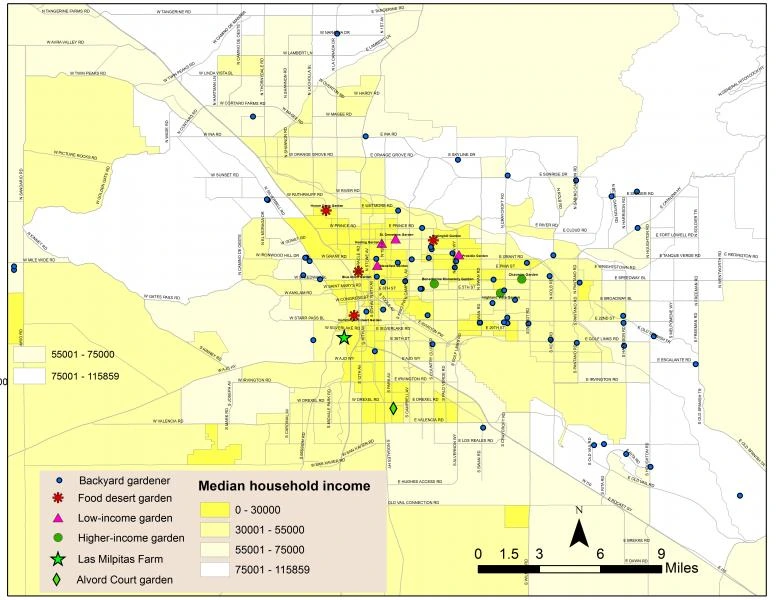
Map of backyard gardener locations in comparison to food desert and community garden locations Map created by Daoqin Tong.
Environmental sustainability is also an important factor, especially in this research project context of Tucson, Arizona. Many of the gardeners cited taking water conservation and water requirements of plants into account as part of their gardening activities.
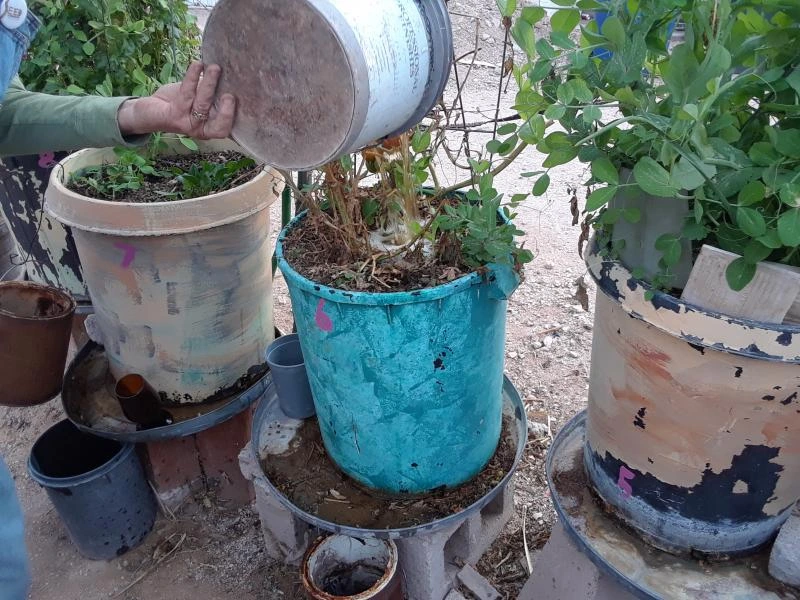
Backyard gardener uses rainwater on containers & collects water as it drains to re-use
For additional details on the findings, refer to the "Research Brief, A Socioeconomic Analysis of the Facebook Group 'Tucson Backyard Gardening."
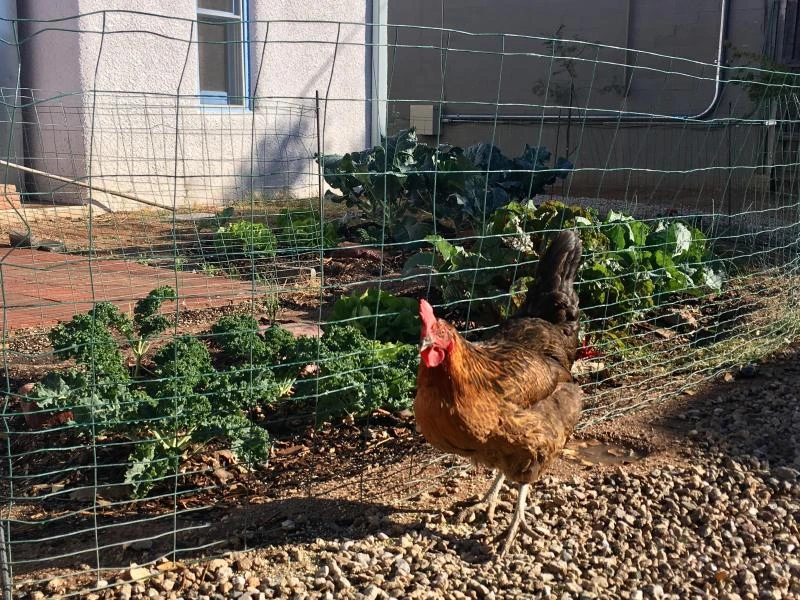
Chicken in backyard garden
We also conducted interviews and a focus group of seven backyard gardeners as part of this research project. These went more in-depth into how gardeners use active and passive rainwater harvesting and solar energy. They were also asked to share ideas related to how the City of Tucson could improve the experiences of gardeners. One gardener recommended for the city to “Keep helping folks harvest rainwater, donate mulch from parks, provide curbside...services to turn garden tree trimmings into mulch or composting materials.”

